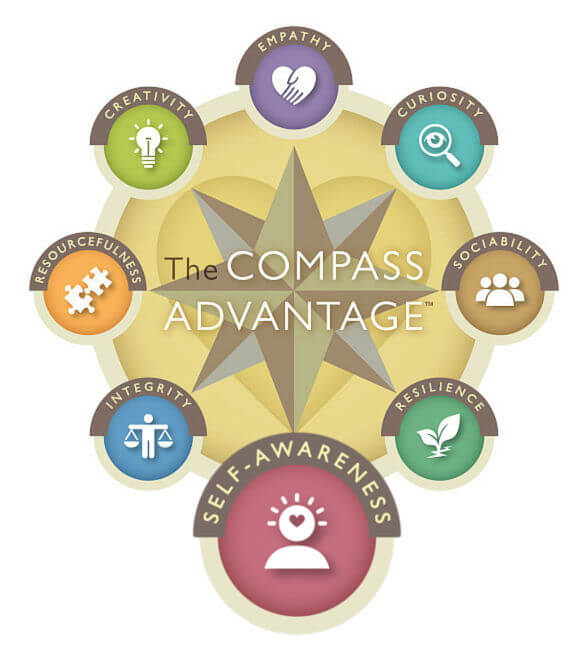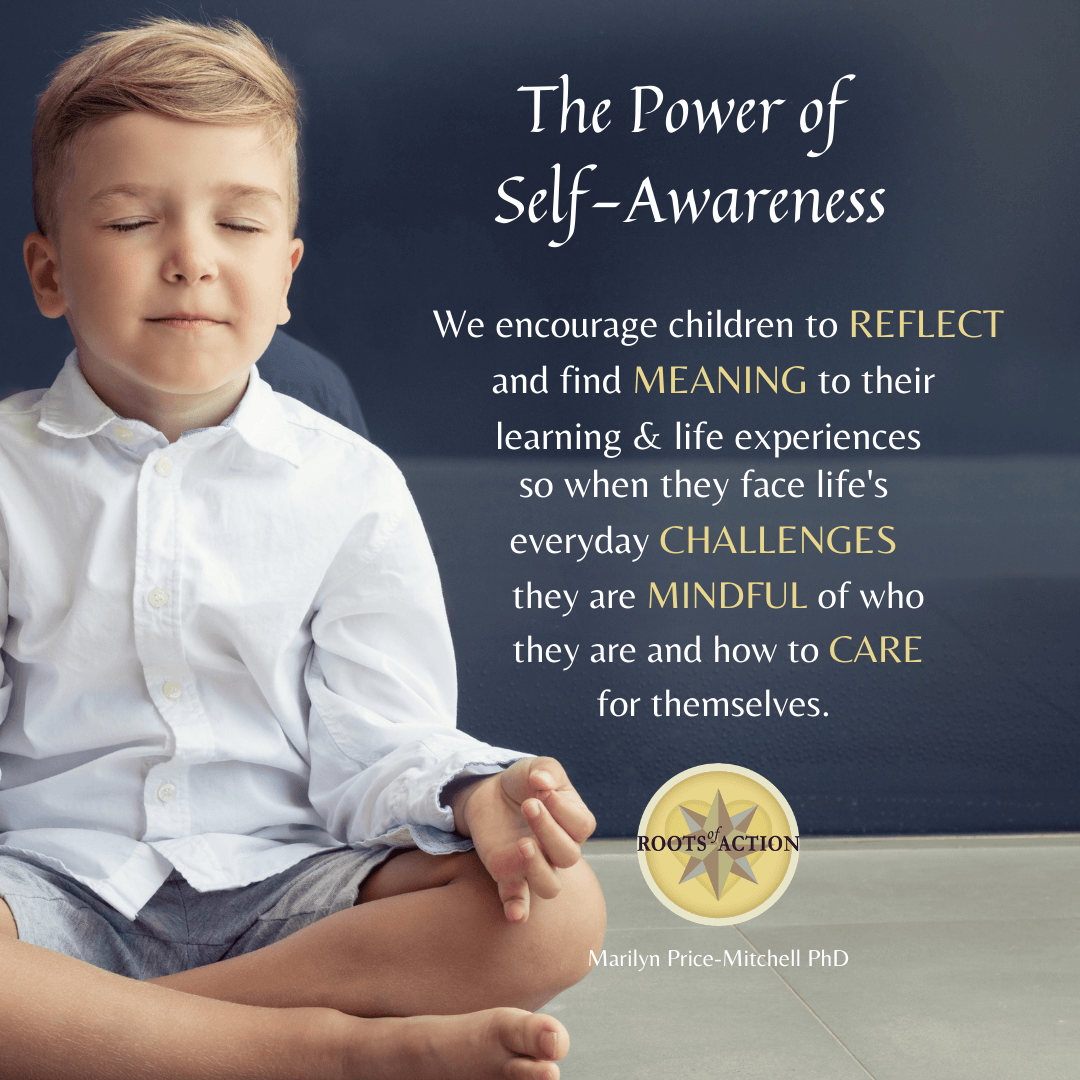
Metacognitive strategies, when employed in the classroom and with homework, help students think about their own thinking. This type of self-assessment helps young people gain greater awareness of their life experiences and achieve at higher levels.
What is Metacognition?
Metacognition is an aspect of introspection and self-awareness that enables individuals to understand and regulate their own thinking. For example, students engage their metacognition when they notice they are having trouble learning certain things, or if they feel the need to double check their work before moving on to the next step. Metacognitive strategies support self-monitoring and regulation processes, important parts of the human mind.
Since antiquity, philosophers have been intrigued with how human beings develop self-awareness — the ability to examine and understand who we are relative to the world around us. Today, research not only shows that self-awareness evolves during childhood, but also that its development is linked to metacognitive processes of the brain.
Metacognitive Introspection
Most teachers know that if students reflect on how they learn, they become better learners. For example, some students may think and process information best in a quiet library, while others may focus better surrounded by familiar noise or music. Metacognitive strategies that work for math may be different from those applied in the study of a foreign language. For some, it takes more time to understand biology than chemistry. With greater awareness of how they acquire knowledge, students learn to regulate their behavior to optimize learning. They begin to see how their strengths and weaknesses affect how they perform. As students’ metacognitive abilities increase, research suggests they also achieve at higher levels.
Metacognition plays an important role in all learning and life experiences. Beyond academic learning, when students gain awareness of their own mental states, they begin to answer important questions:
- How do I live a happy life?
- How do I become a respected human being?
- How do I feel good about myself?
Through introspection, students begin to understand other people’s perspectives as well as the metacognitive strategies that inform their own perspectives.
Self-Awareness and Metacognition
At a recent international workshop, philosophers and neuroscientists gathered to discuss self-awareness and how it is linked to metacognition. Scientists believe that self-awareness, associated with the paralimbic network of the brain, serves as a “tool for monitoring and controlling our behavior and adjusting our beliefs of the world, not only within ourselves, but, importantly, between individuals.” This higher-order thinking strategy actually changes the structure of the brain, making it more flexible and open to even greater learning.
Self-awareness is par t of The Compass Advantage framework of positive youth development because it plays a critical role in how students make sense of life experiences. Linked by research to each of the other Compass attributes, self-awareness is one eight internal abilities linked to student success.
t of The Compass Advantage framework of positive youth development because it plays a critical role in how students make sense of life experiences. Linked by research to each of the other Compass attributes, self-awareness is one eight internal abilities linked to student success.
Metacognitive strategies play a critical role in improved self-awareness because they help students become more efficient at focusing on what they still need to learn. The ability to think about one’s thinking increases with age. Research shows that most growth of metacognitive ability happens between the ages of 12 and 15.
When teachers cultivate students’ abilities to reflect on, monitor, and evaluate their metacognitive strategies, young people become more self-aware, self-reliant, flexible, and productive. Students improve their capacity to weigh choices and evaluate options, particularly when answers are not obvious. When students have difficulty understanding, they rely on metacognition to recognize their difficulties and attempt to rectify them. Improving metacognitive strategies related to students’ schoolwork also provides young people with tools to reflect and grow in their emotional and social lives.
Metacognitive Strategies That Improve Learning
1. Teach students how their brains are wired for growth.
The beliefs that students adopt about learning and their own brains affect their performance and metacognitive strategies. Research shows that when students develop a growth mindset vs. a fixed mindset, they are more likely to engage in reflective thinking about how they learn and grow. Teaching kids about the benefits and strategies of metacognition can be an empowering tool, helping students to understand how they can literally grow their own brains.
2. Provide opportunities to reflect on coursework.
Higher-order, metacognitive thinking skills are fostered as students learn to recognize their own cognitive growth. Questions that help this process might include:
- Before this course, I thought earthquakes were caused by _______. Now I understand them to be the result of _______.
- How has my thinking about greenhouse gases changed since taking this course?
3. Give students practice recognizing what they don’t understand.
The act of being confused and identifying one’s lack of understanding is an important part of developing metacognitive strategies. Take time at the end of a challenging class to ask, “What was most confusing about the material we explored today?” This not only jumpstarts metacognitive processing, but also creates a classroom culture that acknowledges confusion as an integral part of learning.
4. Have students keep learning journals that cultivate metacognitive strategies.
One way to help students monitor their own thinking is through the use of personal learning journals. Assign weekly questions that help students reflect on how rather than what they learned. Questions might include:
- What was easiest for me to learn this week? Why?
- What was most challenging for me to learn? Why?
- What study strategies worked well as I prepared for my exam?
- What strategies for exam preparation didn’t work well? What will I do differently next time?
- What study habits worked best for me? How?
- What study habit will I try or improve upon next week?
Encourage creative expression through whatever journal formats work best for learners. For example, mind maps, blogs, wikis, diaries, lists, e-tools, etc., are metacognitive strategies that work for a diversity of learners.
5. Use a “wrapper” to increase students’ metacognitive monitoring skills.
A “wrapper” is a short intervention that surrounds an existing activity and integrates a metacognitive practice. Before a lecture, for example, give a few tips about active listening. Following the lecture, ask students to write down three key ideas from the lecture. Afterward, share what you believe to be the three key ideas and ask students to self-check how closely theirs matched your intended goals. When used often, this activity not only increases learning, but also improves metacognitive monitoring skills.
6. Consider essay vs. multiple-choice exams.
Research shows that students use lower-level thinking skills to prepare for multiple-choice exams, and higher-level metacognitive strategies to prepare for essay exams. While it is less time consuming to grade multiple-choice questions, even the addition of several short essay questions can improve the way students reflect on their learning to prepare for test taking.
7. Facilitate reflexive thinking.
Reflexivity is the metacognitive process of becoming aware of our biases — prejudices that get in the way of healthy development. Teachers can create a classroom that cultivates awareness of societal biases by increasing empathic communication. When students engage in conversations or write essays on biases and moral dilemmas related to politics, wealth, racism, poverty, justice, liberty, etc., they learn to “think about their own thinking.” They begin to challenge their own biases and become more flexible and adaptive thinkers.
Student Success Series for Educators
Read the nine articles in the Student Success Series:
Student Success Develops from Inside Out – (Series Introduction)
Curiosity is a Core Predictor of Academic Performance
Social Emotional Development in the Classroom
Building Resilience in Your K-12 Classroom
Metacognitive Strategies for Student Success
Academic Integrity is Essential to Learning
Teach Students to Achieve Goals
Creative Thinking Sparks Student Engagement & Discovery
Empathy in the Classroom — coming soon.
Follow our Facebook feed to stay informed of new articles.
Free Resources for Teachers
The Compass Youth Survey for Students ages 10-17: An online survey that can help students identify, understand, and strengthen their core abilities and impact their success as a student.
Our Community Promise: a frame-ready document that many teachers have hung in their classrooms to remind them and their students of the kind of values and habits of thinking that nurture student success.
I Have a Dream: a frame-ready document created by teens that define genuine success—to engage your students.
Reframing Success: Helping Children & Teens Grow from the Inside Out: an eBook that introduces The Compass Advantage. This eBook has been widely used by schools as a “Book Club” reading to engage parents about raising healthy children and teens.
Related Articles to Metacognitive Strategies
Self-Awareness: How Parents Foster Meaning and Purpose in Kids
Published: January 18, 2023




